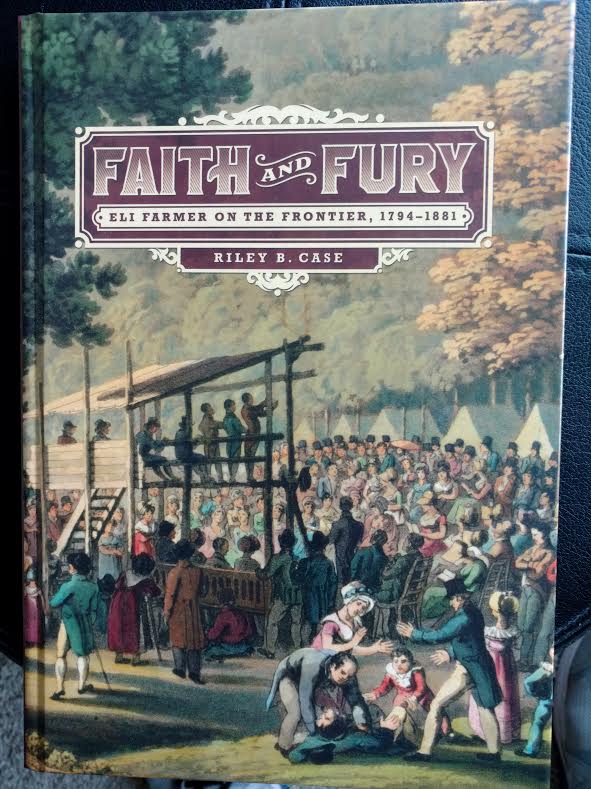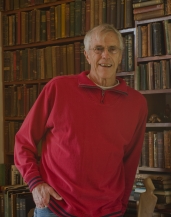Faith and Fury Eli Farmer on the Frontier

This book
was released on September 19, 2018 by the Indiana Historical Society. The Indiana Historical Society is known for its You Are There live
interactive exhibits and from September, 2018 through Spring 2020 the
exhibit will feature an incident out of the Eli Farmer book that took
place in Danville, Indiana on May 14, 1839. It involves a great
revival in which a Methodist (Eli Farmer) and the Methodists actually
cooperated with Baptists and Presbyterians.
The book is actually Eli Farmer's autobiography and covers his life
through 80 years. Much of that time he was a Methodist circuit rider
who (by his statistics) took 5,000 members into the church. Much of the
book covers the Western Revival, especially the years 1820- 1840.
During that time while the population of Indiana increased by over
3,000% Methodism grew by over 9,000%. Camp meetings were perhaps the
biggest reason for the increase. The book explores how these camp
meetings introduced some practices and emphases that helped redefine the
word "evangelical" in the American context. Some of these include the
introduction of the "altar," camp meeting music, the necessity of
conversion for church membership and a movement toward sectarianism and
individualism in American religion.
Of
course Eli Farmer did other things besides ride the circuit and hold
camp meetings. He got into brawls; he was a state senator; he held his
own evangelistic crusade among the slaves before the Civil War; he was
in the army during he War of 1812; he tried to be in the army during the
Civil War but was (obviously) too old so he became a volunteer
chaplain; he was editor of a rabble-rousing newspaper.
Some
excerpts
On preaching to the Indians: p. 80. "My friends of the
'Creek Nation" were fond of attending church. I could frequently tell
when I entered their territory by the foot-prints leading off in the
direction of the place of worship, the prints being made with
moccasins."
On the religious culture of the
West, p.70: "But in the West, at least in the opening decades of the
nineteenth century, there was no established religious culture and,
therefore, no established standards to determine what constituted
religious extremism. Revivalism did not challenge the prevailing
culture since there was nothing to challenge. Revivalism became part of
and helped to create the religious culture on the frontier. Thus, if
revivalism stressed religious experience, religious experience became
part of the religious culture. If distinctions based on class or wealth
or gender or race were blurred in revivalism, so, too, where they
blurred in the religious culture. If revivalism emphasized the
importance of the individual as opposed to outside authorities and
tradition, so developed a religious culture that lent itself to
sectarianism, or the creation of numerous Christian denominations, each
with specific doctrinal beliefs that separated them from other
denominations or sects..."
On the introduction of the altar and its identification with the "invitation." p. 44: "There
is no precedent for anything like the revivalist's altar at any time or
at any place or for any other group within Christendom before the first
decade of the 1800's. The American camp meeting introduced the use of
the altar; it was not used by the Wesleys in England nor during the
First Great Awakening in the North Atlantic states. It was, in fact,
not used even at Cane Ridge, nor in any of the camp meetings described
before about 1807 to 1810."

